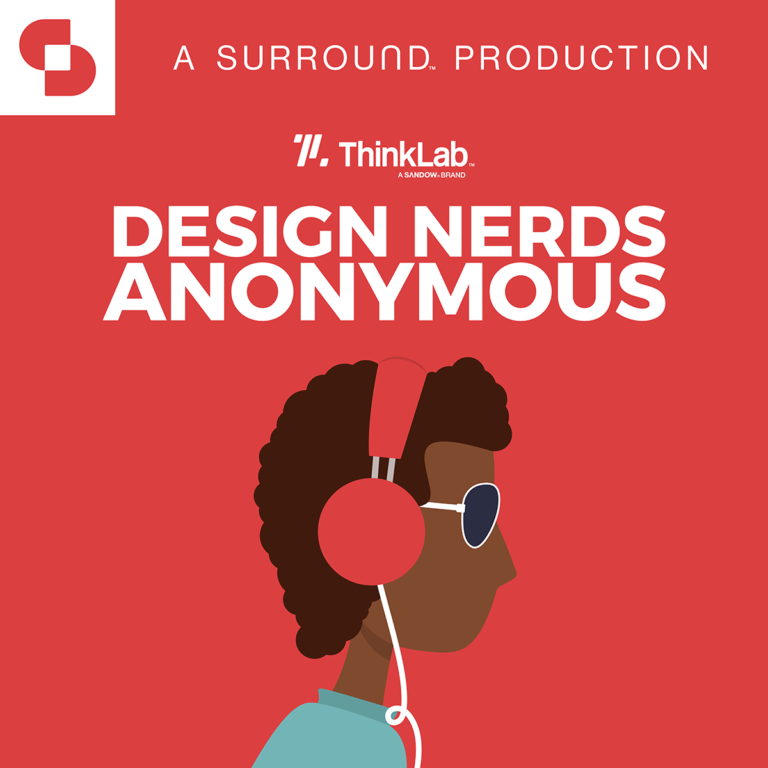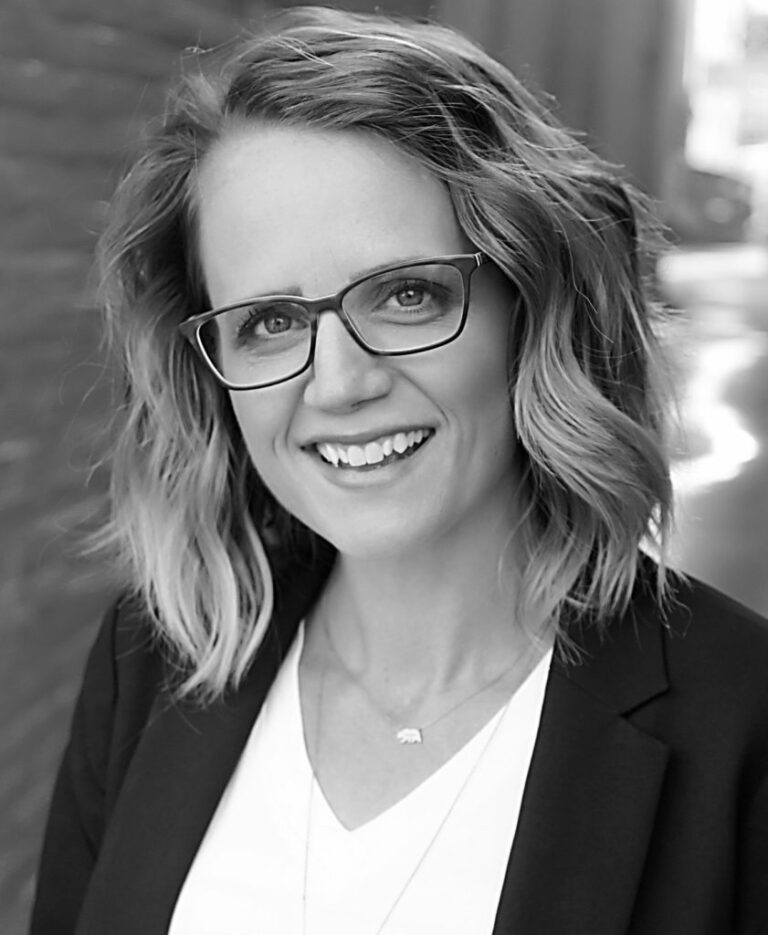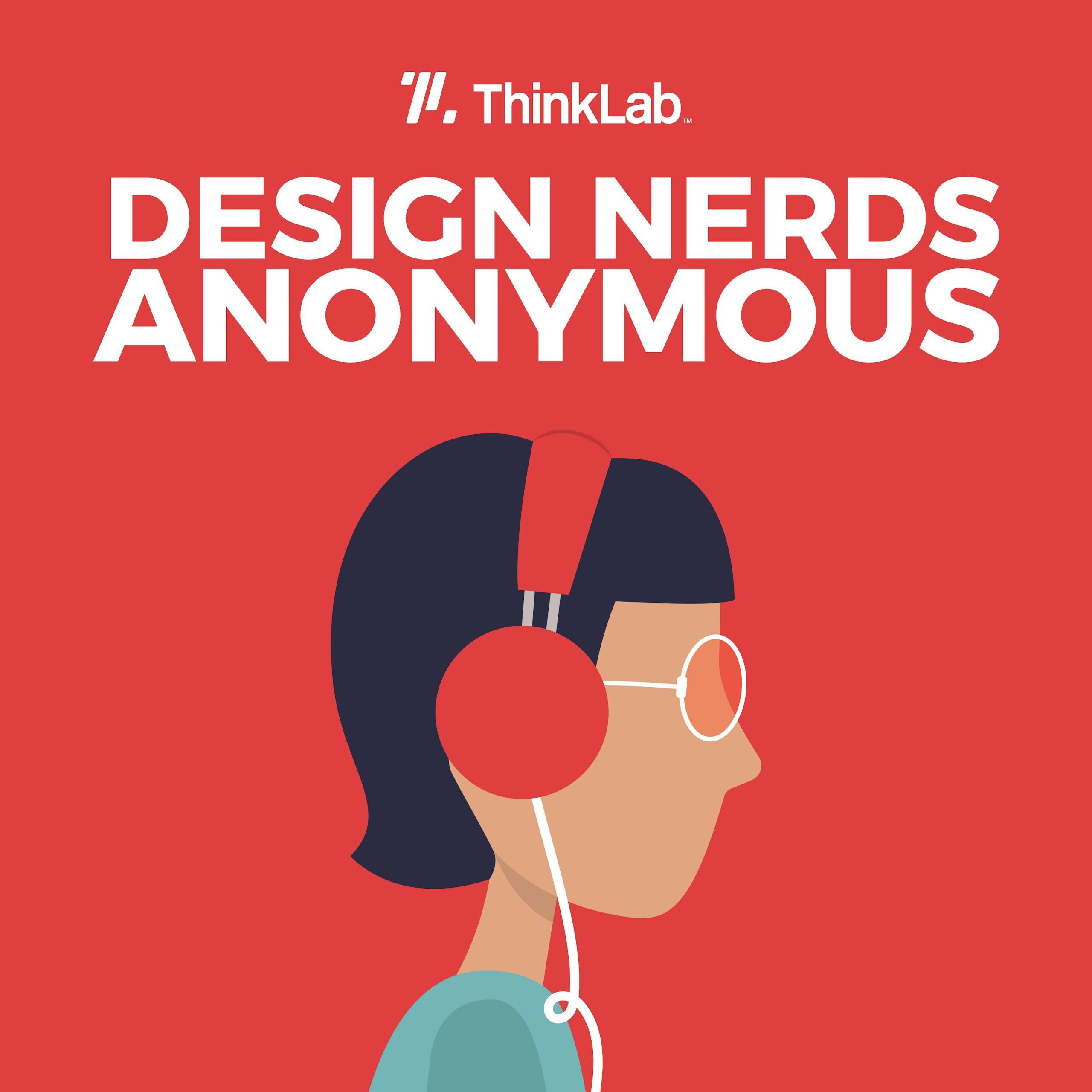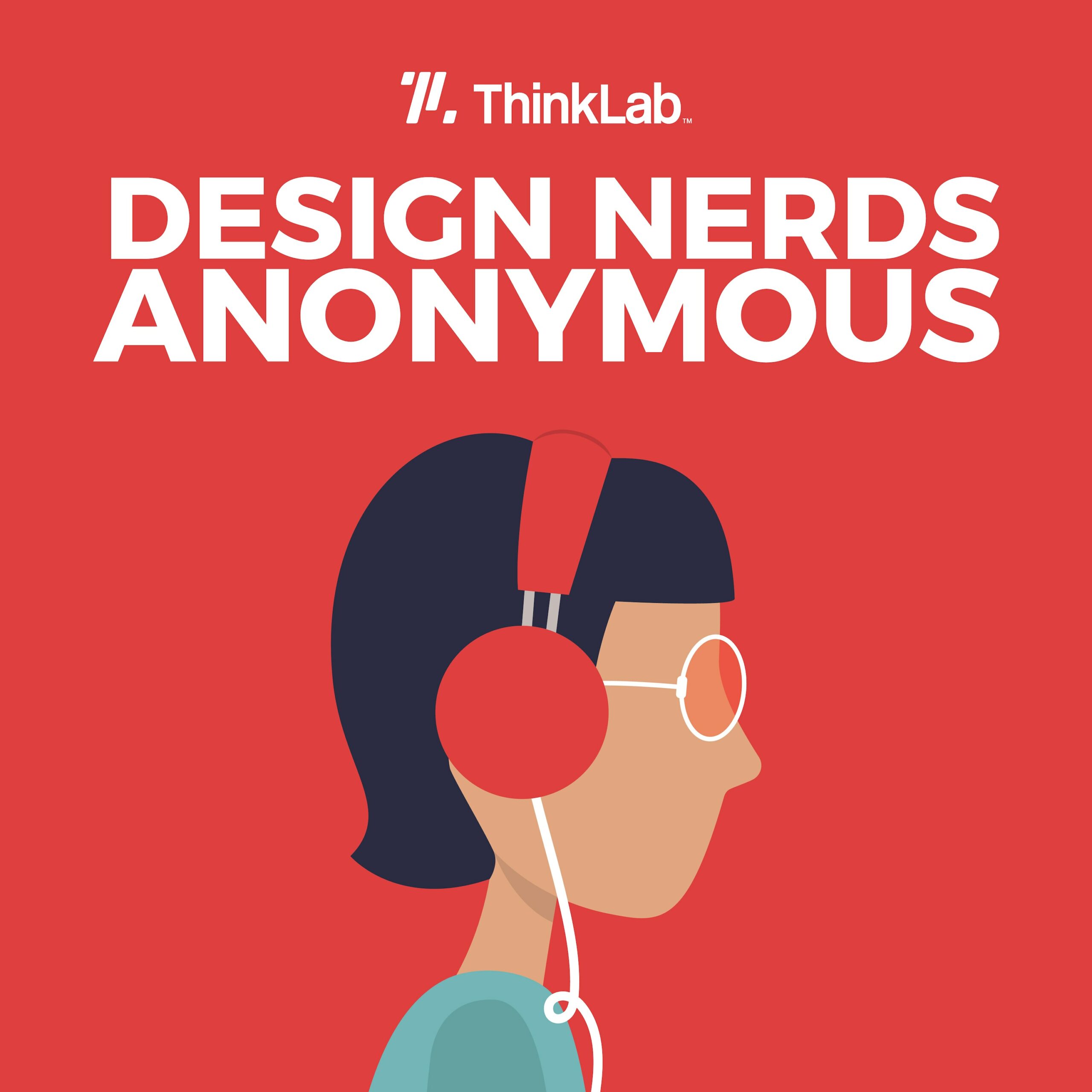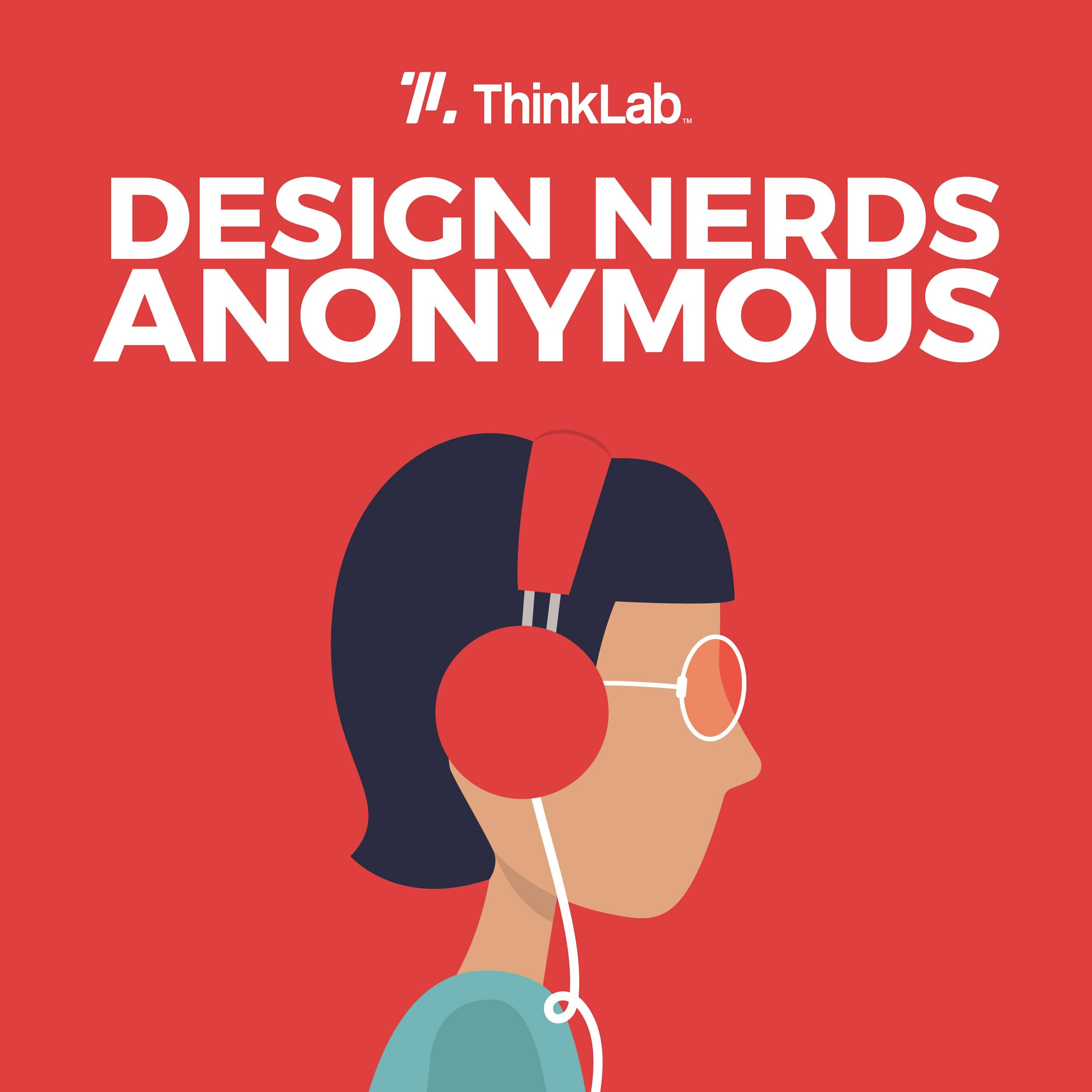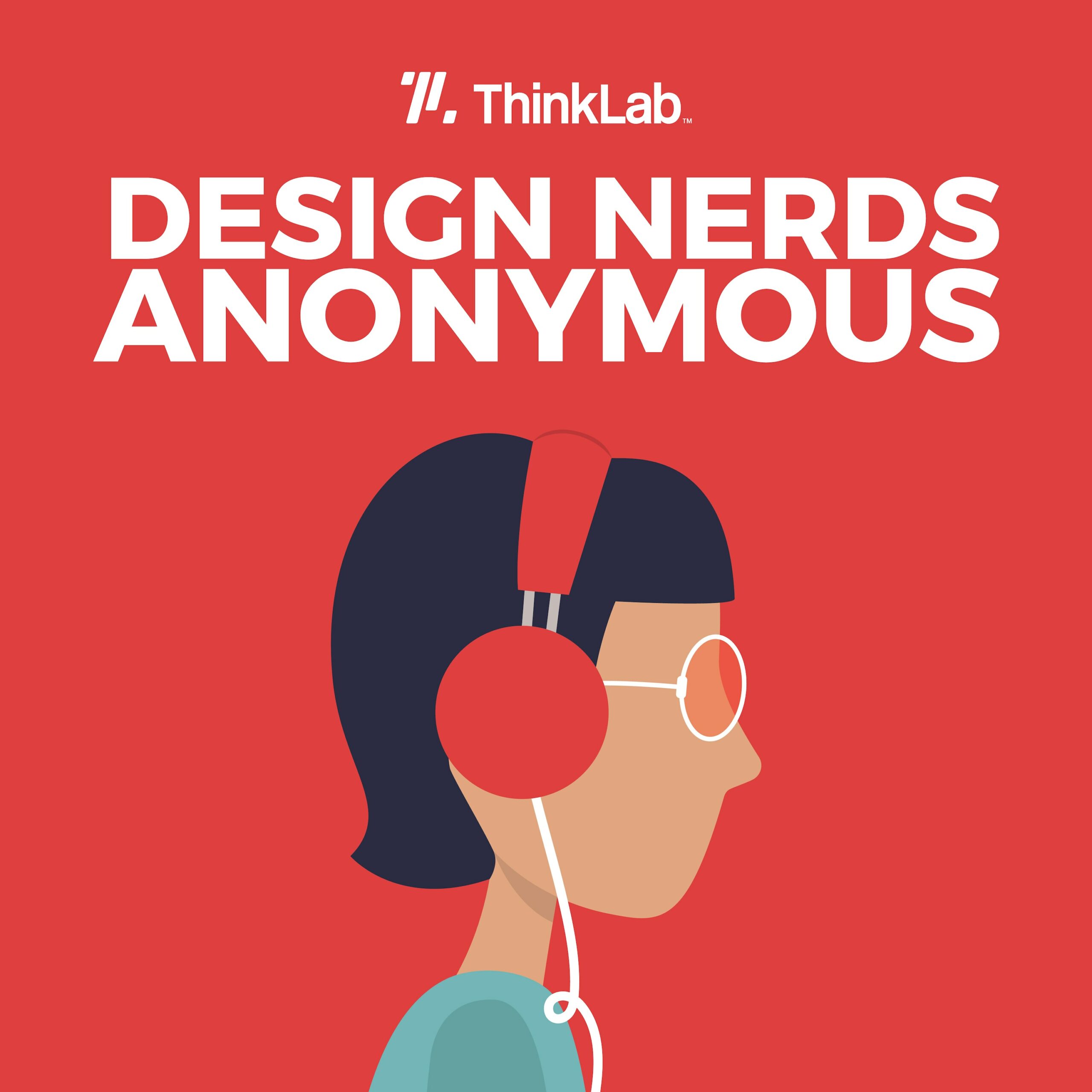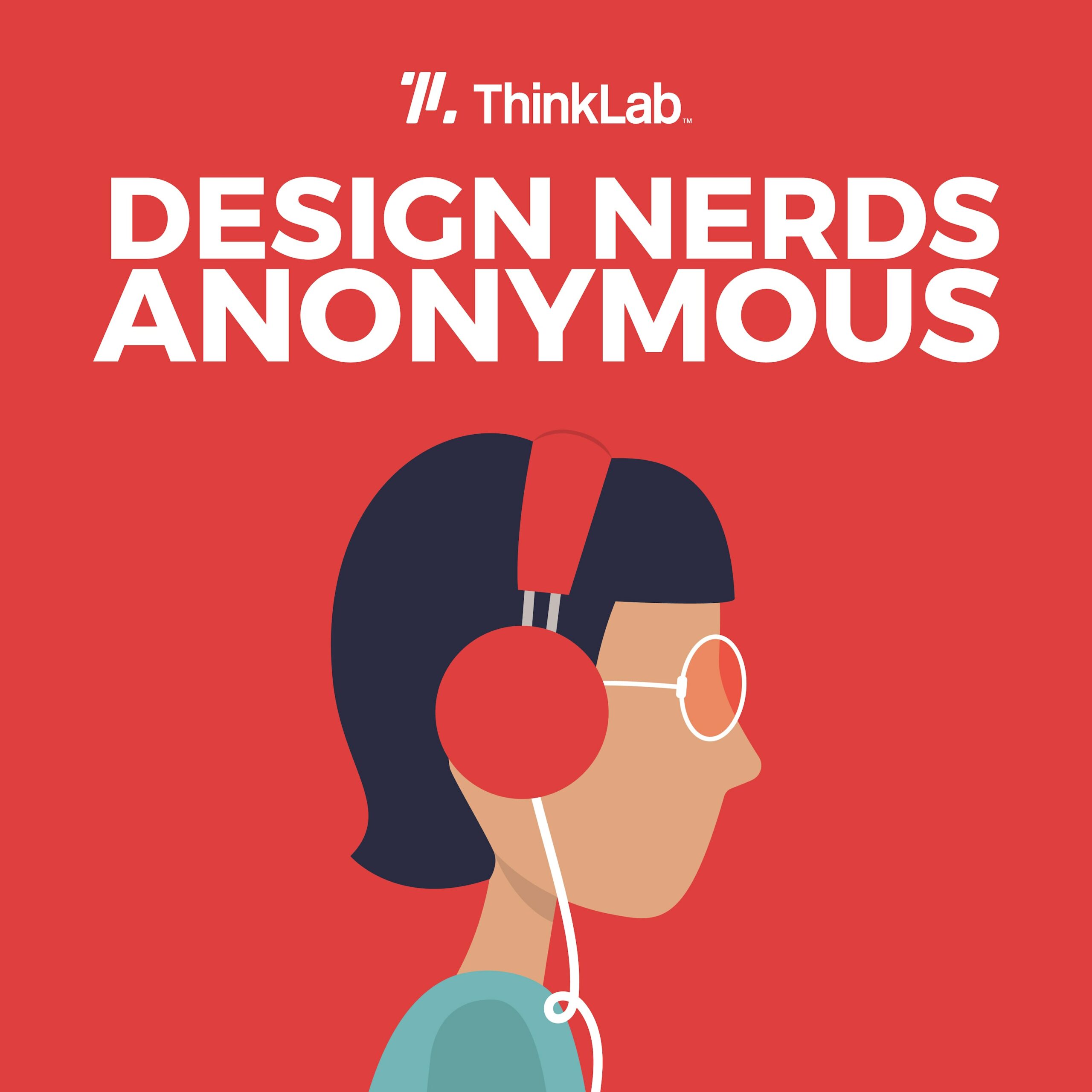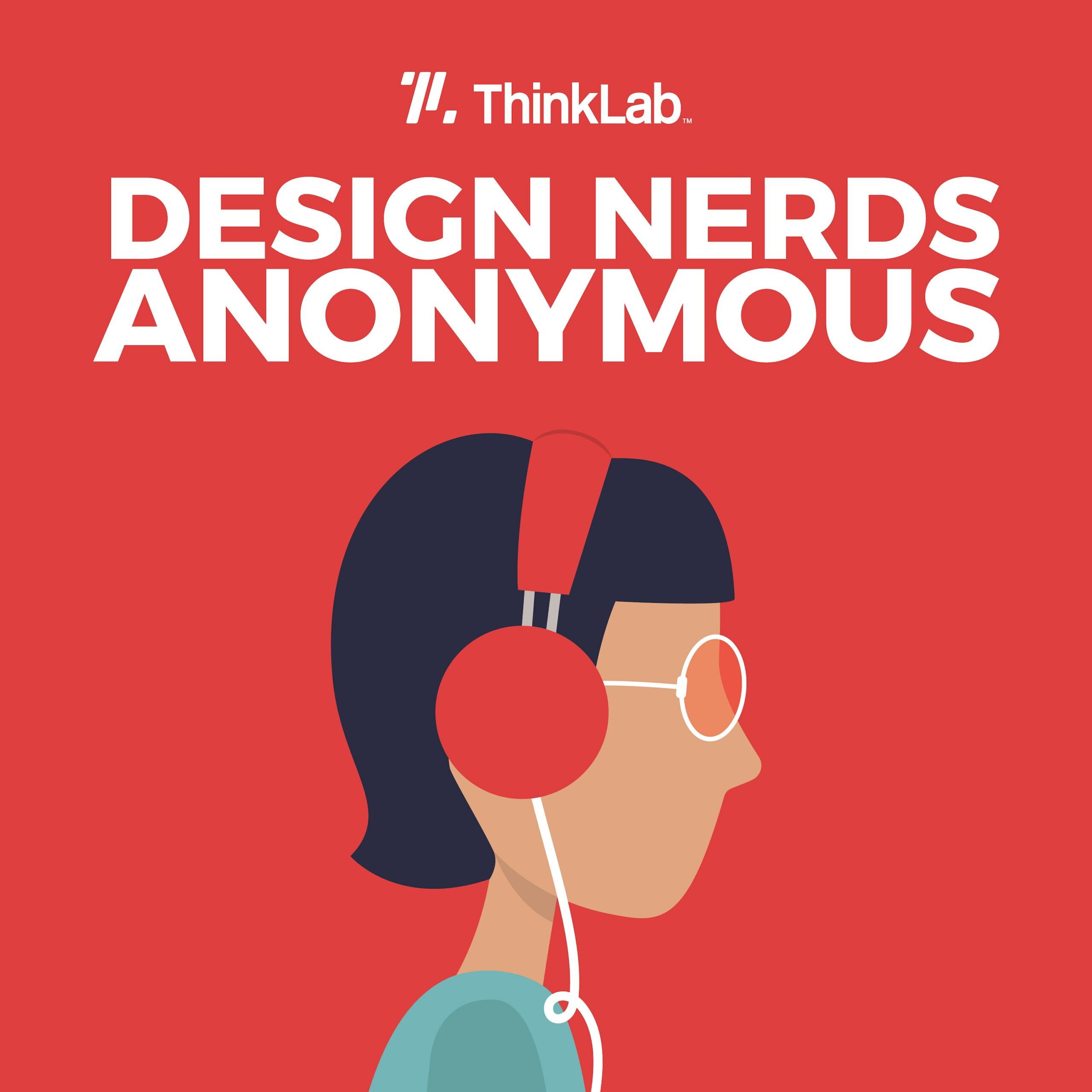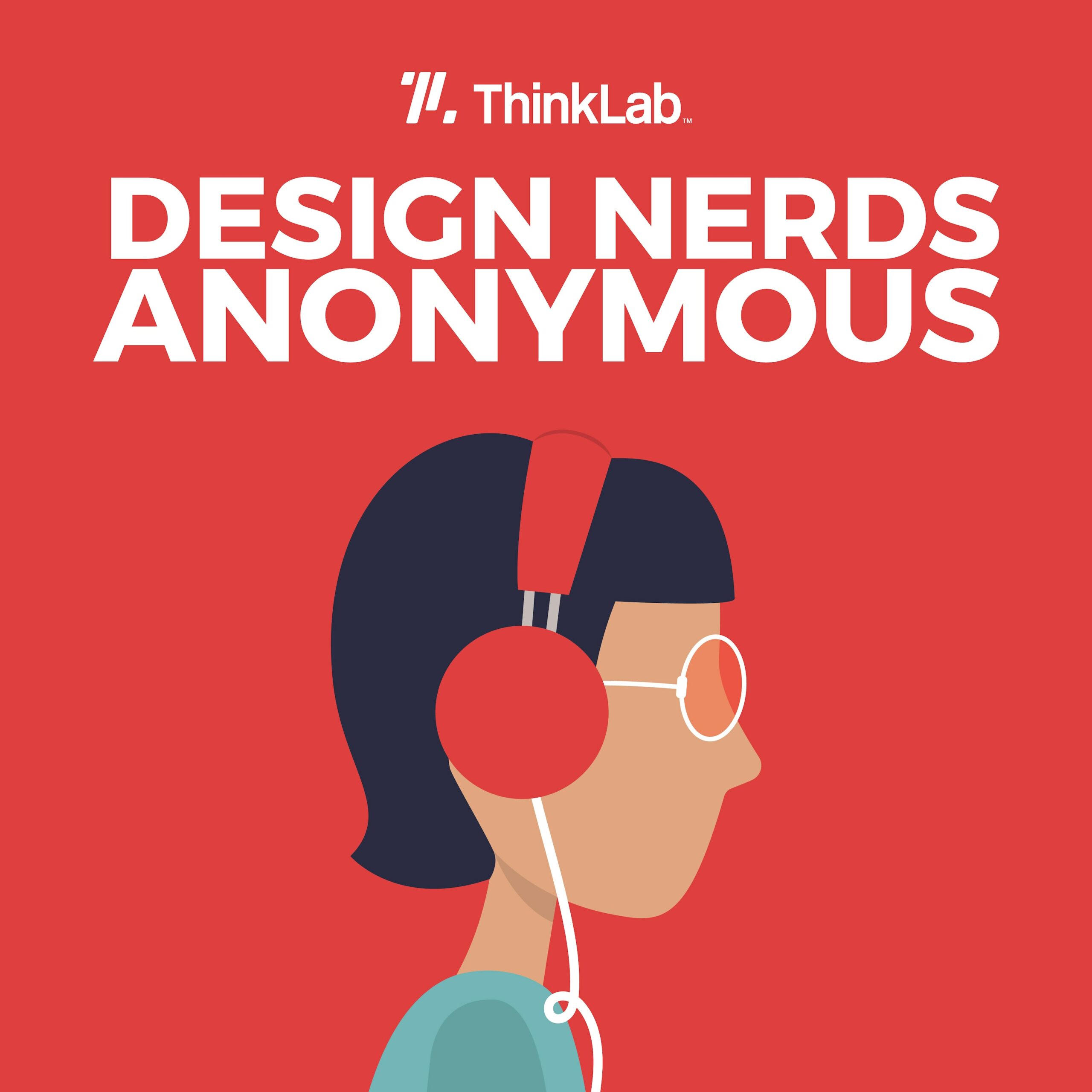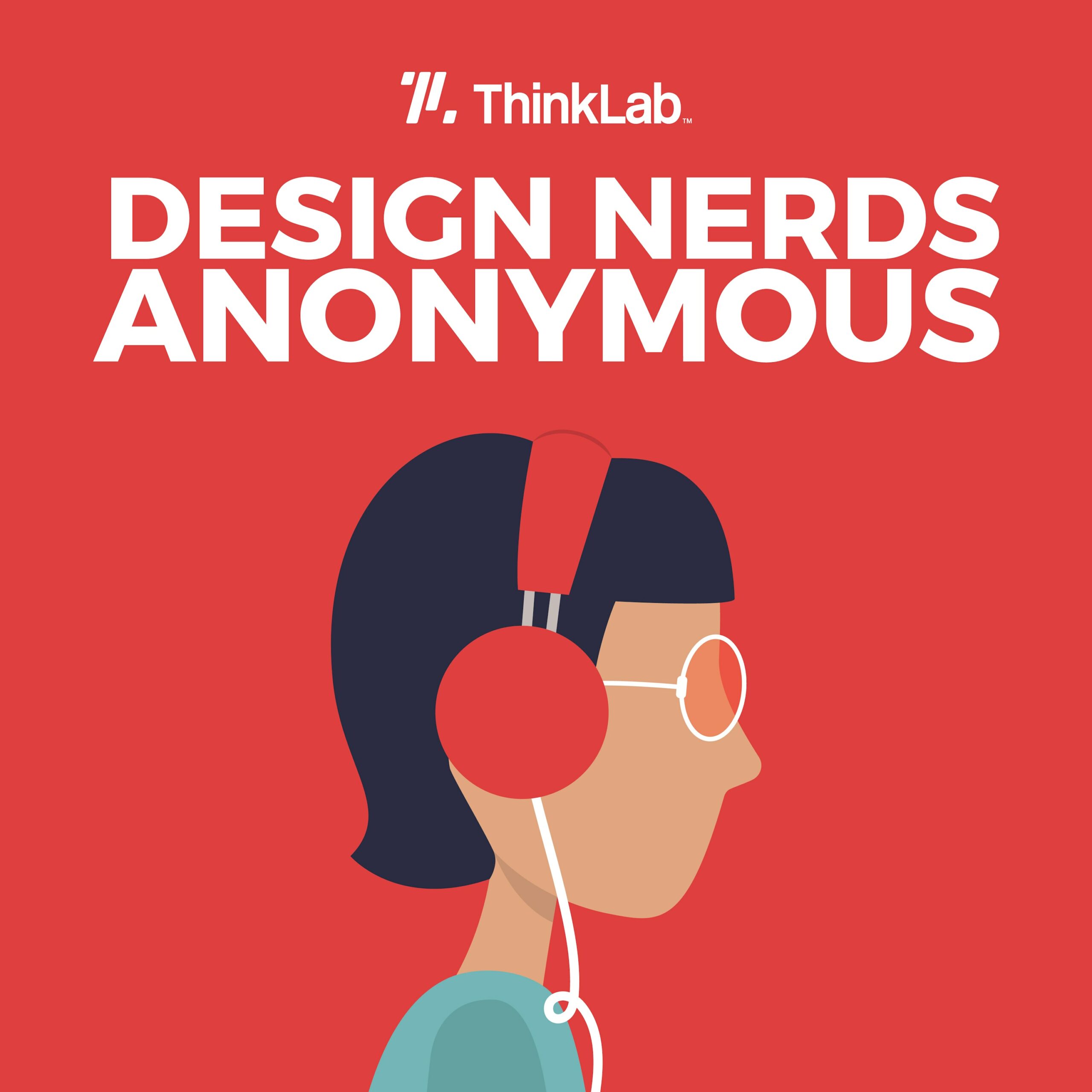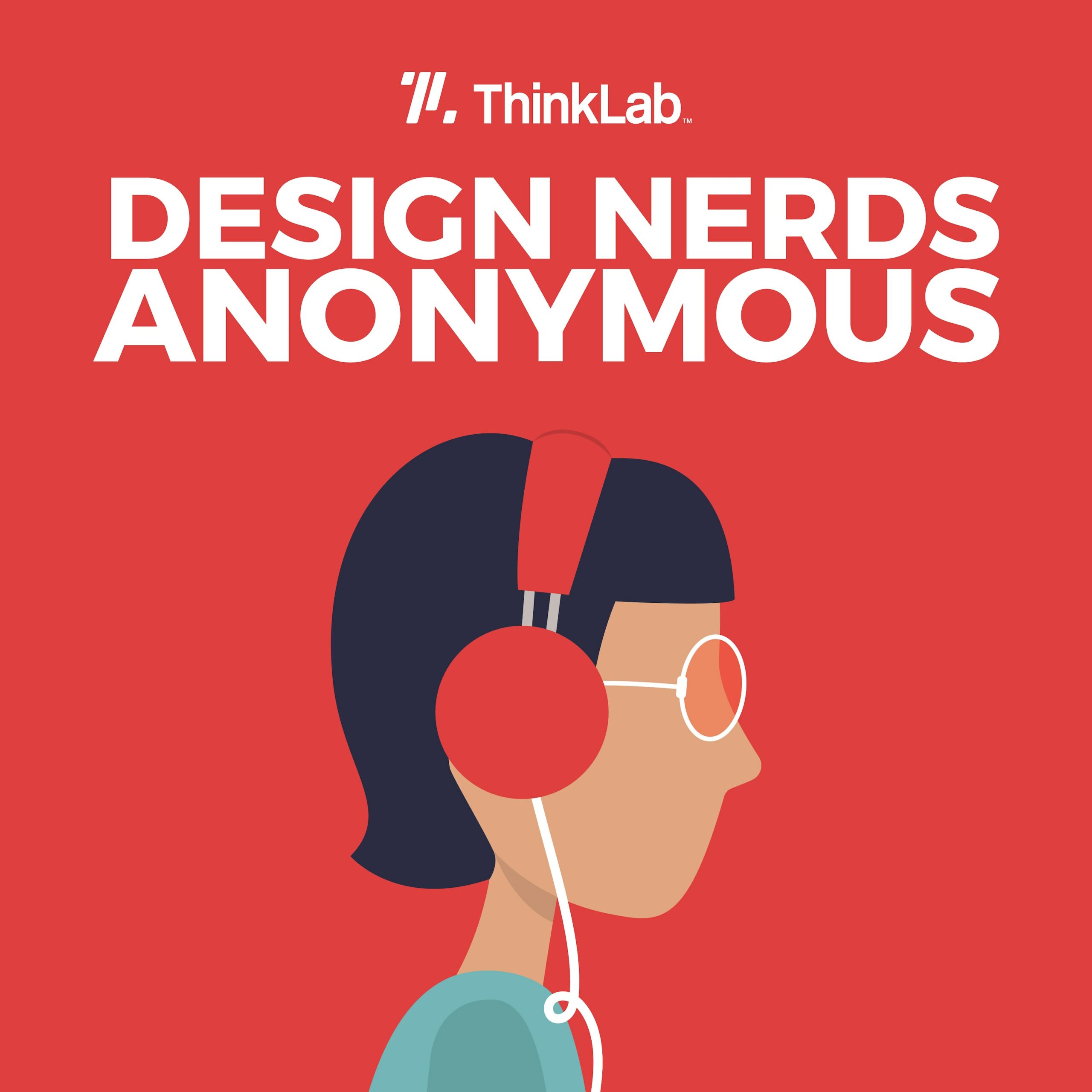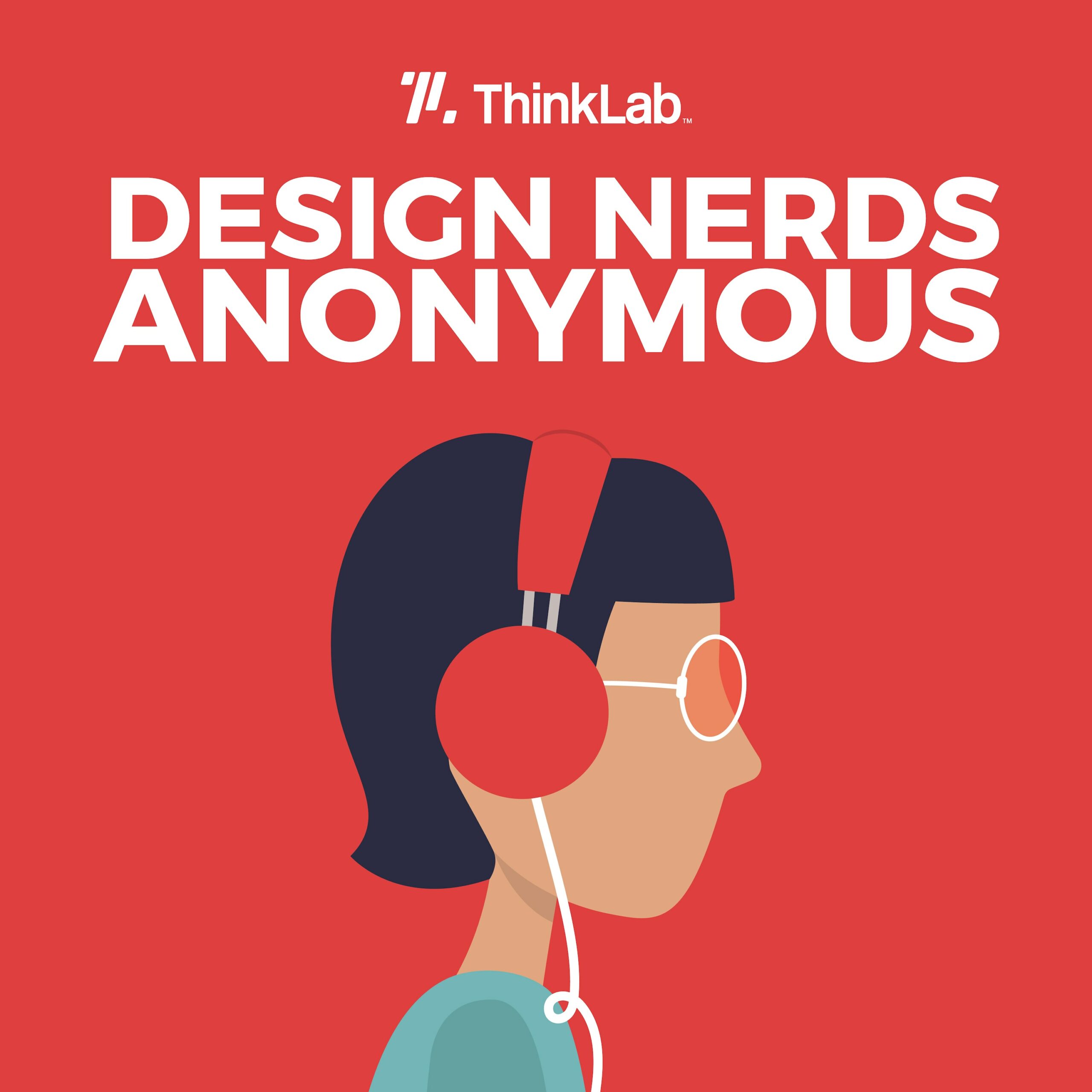The pandemic has forced many functions of the design library online. Does this mean that library will pivot to primarily virtual in the future, or will there be a move to return to more physical spaces?
In this episode, ThinkLab explores both sides in a discussion with two expert guests. Erica Buss, research and information services manager at Ankrom Moisan Architects, emphasizes the remaining importance of physical spaces along with expert guidance and curation. And Kristin Cerutti, a design leader at NELSON Worldwide, stresses their approach to the digital space.
Ultimately, both agree that it’s time for the library to be reconceived as a dynamic, living space, one that supports the larger ecosystem of the firm and is a source for both information and inspiration. It’s not a matter of digital or physical. It’s really a both/and.
In this episode:
[6:35] Erica explains how the library is not just a physical space, but also a service.
[10:37] Kristin details ways to repurpose the space once used for books and shelves.
[16:49] How can virtual events help foster deeper connections with colleagues?
[21:31] Kristin urges A&D consider the environmental impact of keeping libraries stocked.
[27:16] Erica talks about the power of collaborations with reps.
Connect with our interviewees on LinkedIn:
This season of Design Nerds Anonymous is brought to you by Mannington Commercial, Keilhauer, theMART, and NeoCon, companies doing big things to move the design industry forward.
Take Action
We put together a complimentary cheat-sheet featuring our top 10 tips for creating an integrated physical + digital go-to-market strategy. Want to email it to your team or print it out and pin it up at your desk? Download yours here.
Finally, thanks to Hannah Viti, our audio producer, and Blue Dot Sessions for providing the music for this episode.
Episode 3: The Future of the Firm Library
Amanda: [00:00:00] Maybe you’re a designer who’s just settling back into your firm office, and trying to figure out how to reset that area in your firm — formerly known as the library — that currently looks like Mount Vesuvius erupted. Or, maybe you’re a manufacturer trying to evaluate the future of investments in binders, samples, and your rep’s precious time.
If either of those pique your curiosity, you’re in luck. Because today, we’re going to explore the future of the A&D firm library. ThinkLab spent the past six months exploring the future of product specification, and we used our findings to develop season three of this podcast. In each episode, you’ll hear us tackle one key challenge from our research.
We selected this episode’s interviewees because of their different yet both brilliant approaches to their library. Are [00:01:00] firms doubling down on physical space after being without it for so long, or will they go to a digital extreme? You’ll hear different perspectives from two of our Interior Design Giants of Design.
First up: meet Erica.
Erica Buss: My name is Erica Buss. I’m the research and information services manager with Ankrom Moisan Architects. We have offices in Portland, Seattle, and San Francisco, and I am based in Portland.
The A&D library is not only a physical space, but it’s also a service. I’ve said that from day one, and during the pandemic that has been driven home even more. We are certainly leveraging the many product databases and the digital resources that are available to augment our library services. But we certainly have not abandoned the physical space.
Amanda: And meet our second interviewee, Kristin.
Kristin: Hi, I’m Kristin Cerutti. I am a design leader at NELSON [00:02:00] Worldwide, and I’m based in Chicago.
Amanda: And you’ll hear while Erica emphasizes the remaining importance of physical space, Kristin will emphasize their approach to the digital space.
Kristin: We actually created our own digital library, where we share it amongst all of our central and western regions. Honestly, between that and what is Material Bank — which thankfully came out before the pandemic and has really changed the way people can get physical samples — we’ve seen a huge swing in what people are expecting when they come back to the office.
Amanda: We spoke with both ladies about their brilliant yet nuanced approaches in a joint interview. And while we set them up as considering physical versus digital, what you’ll discover by the end of this episode is that they actually quite agree on the future of the A&D firm library.
Welcome to season three of Design Nerds [00:03:00] Anonymous, the podcast that sparks curiosity at the intersection of business and design. I’m your host, Amanda Schneider, founder and president at ThinkLab, the research division of SANDOW Design Group and sister company to media brands you know and love, like Interior Design, Metropolis, Luxe, and more. At ThinkLab, our passion is sharing inspiration for your business, fuel for your design process, and connections with people and ideas for positive disruption. So thanks for listening. We’re glad you’re here.
Now to provide a bit more context into this conversation, let’s dive a bit deeper into each of their backgrounds. First up: Erica.
Erica Buss: My professional background is in librarianship. I have a master’s in library science, but really what I do at Ankrom — why we call it research and information services — is that I manage and curate the flow of information around products, around market and consumer trends into the [00:04:00] firm. And so I wear many hats. Some of those include researcher, curator, advocate, educator, ambassador, and it’s a really fascinating role. It’s a really unique role, both outward facing and inward facing, and really built on both internal relationships with our designers and architects and external relationships with the local rep community.
Amanda: And you’ll hear from Kristin that NELSON’s approach, augmented by the pandemic, has been quite different.
Kristin: We had staff dedicated to run the library, assist with research. I’ve been at NELSON for seven years now. We have never had that role in any of our offices, and we have approximately 20 offices across the U.S. In Chicago specifically, we used to have one of our administrative staff, you know, partially handle that role. But honestly, over the years, even prior to the pandemic, we really [00:05:00] decided it was more important for our designers to truly understand and get to know our reps — get to understand our vendors, the products, why we choose certain things. And really have them take control of it.
Amanda: But though their staffing approaches are different, you’ll hear common challenges as everyone shifted remote — and, to some extent, remained remote. It’s not a matter of digital or physical. It’s really a both/and.
Erica Buss: At the beginning of COVID, when all of our designers went home, and they were like, “What am I going to do? I don’t have access to materials,” I was actually the one that was showing them, OK, these are all the digital product databases available to you. You can check out Material Bank; either, you can order these samples. These are some of the other digital resources to research and get a more clear understanding of the sustainability attributes of different products. I would say that it’s sort of like anything with the internet: There are many wonderful [00:06:00] resources and tools and information available, but there’s also the flip side, right? So you can self-serve now, and that’s great, but there’s also a bewildering amount of information and options that can really bog you down and lead you astray and take up more of your time. And so, you sort of need a guide.
You want to have a trusted expert that has eyes across an industry or a product category, and can sort of provide that expert guidance and that curation. And that’s something that at our firm, the — when I say the, the library is more than a physical space, it’s also a service — that’s part of what I’m talking about. That expert guidance, that curation, regardless of it’s taking place physically or digitally or both. So, I think it’s more important than ever now with — you know, to layer on that, that discerning lens, that customization, tailoring the products and services to the needs of the firm.
Erica Buss: And I think it’s important for the person in the firm who’s [00:07:00] managing that service — physical and digital — to be embedded. And sometimes that’s having a physical space. And sometimes it’s being able to curate and tailor, um, and showcase and advocate for different digital solutions: product databases or other digital resources that might fit or be applicable with a certain designer.
I would say that at our firm, we really take a “both/and” approach to the library rather than going down one extreme or the other.
Amanda: Did I remember correctly that you’re actually doubling down on your space and hiring?
Erica Buss: We did hire an additional person during the pandemic part-time to help manage the day-to-day physical space.
Amanda: I’m really excited, Kristin, for you to share your approach, too, which I think is different, but equally fascinating to me, as we look at different ways to tackle the same challenges that many firms are having.
Kristin: Over the last 18 months to 24 months — which makes me cringe when [00:08:00] I say that now — everyone’s been home, and across our entire platform across the U.S., we are all still remote. We had to train all of our designers and staff how to go hunting for this information when you can’t just walk over and grab a book. So, we actually created Teams channels and created our own digital library where we share it amongst all of our central and western regions. We together share a virtual library, and within it, there is a category for product updates. There’s a category for research. There’s a category for white papers. There’s a category for events that are happening. And we have designers that share the task of populating that as it comes through. And we’ve all taken on the role of — The vendor sends us something, we know how to populate it into that Teams channel so everyone has access to it.
And, honestly between that and what is Material Bank — which thankfully came out before the pandemic and has really changed the [00:09:00] way people could get physical samples — we’ve seen a huge swing in what people are expecting when they come back to the office. No one wants this stuff in their house. And I am one of those people that had materials stacked up in my second bathroom in the shower for months as I was picking palettes at home. And yes, I had a husband that was like, “You’ve got to be kidding me. I can’t believe you’re still doing this.”
So we are by no means encouraging our teammates to do this in their homes. That is what the office is for. But what we’re trying to encourage is, because we’ve been without the physical for so long — We do still need physical samples. We need loose samples. We have to put palettes. But how much of that do we really need, and how much it was just there, and honestly, never being updated or never being utilized, and just taking up space that could potentially be used more as a living lab where we can really test things out? And, like Erica was saying, bring someone in. Have something there, have color-changing lights, and we can see how different materials look under things. [00:10:00] Why is it just a static element with books on a shelf, collecting dust? Which it was for us.
Amanda: And what you heard Erica say, that they’re doubling down on a system that was working very well for them pre-pandemic. And now even expanding their staff in their 900 square-foot space.
NELSON is taking a more digitally focused approach that was greatly shifted by experiences over the past 24 months.
Kristin: I want to say we’re about 400 square feet of library space prior. We have not lost square footage. So the square footage is maintained, but what we used to have, we had drawers and drawers at the base of everything, where all the loose samples were stored, with shelves above just filled full of books. So how we’ve changed it is all of the storage below with loose samples maintains; all the shelves and all the books are gone. We are no longer going to store any book of any sort in our library. If you need a loose [00:11:00] sample, you can order it.
That gives us more layout space, wall space, to attach monitors, to pin things up for people to be able to post some cool new thing that they’ve seen and share it with everybody else. So instead of, during some of those static elements — And we all know, you know, one carpet manufacturer will have 40 books, and our designers are maybe utilizing 10 of those on a regular basis. If someone really does need to see one of everything, can they order one book just for that individual project and send it back?
What we’re trying to do is encourage more loose samples that can be rotated out on a more frequent basis, and all the rest of this space is more digital. More monitors, so when you’re in there with your laptop that you’re now moving to and from your house, can you plug in and see something bigger on a monitor, and then lay your samples out next to it and have your drawings up ready to look at? Can you bring a client in and pull a bunch of stuff and have more layout space? Because the books aren’t taking up that layout space anymore.
So we’re just trying [00:12:00] to look at it a little bit differently. And honestly, if we don’t need the samples, ship them back out when we’re done. Another thing that we did is a wall that used to be file cabinets of old project work, those have all been removed. And we also added tackboard there and incorporated a series of shelves for Material Bank boxes to come in and out, with a set of drawers and a counter. So for every active project we have going in our office, they are assigned one set of drawers with a counter and one shelving unit with pin space above for them to store their Material Bank boxes as they go in and out, to store any loose samples, and to have a layout space for their actual project.
So our teammates, if they’re only in the office three days a week, you can come in on your day, and you know where the active projects are located. If you need to reference something, it’s not hidden somewhere in a corner. And it also allows us to more actively go, OK, that project’s been [00:13:00] sitting out for three months. Do you really still need that space, or can we pack that up, put it in a binder, scan it in, and give that to the next team?
We’re not shrinking our library at all. We’re just trying to utilize the space we did have in a little bit different way.
Erica Buss: I love what you said, and I firmly believe this about, it can’t be a static space. I 100 percent am on board with that. First of all, we can stop calling it a library. It doesn’t have to be a library. It can be a material performance lab. It can be a maker space, an innovation center. And I really think for it to be fully utilized and fulfill its full value to a firm that it really cannot be static. I think it needs to be dynamic. I think of it as a living space that really supports the larger ecosystem of the firm. That needs to be a shift, for sure. And for how firms think of their A&D libraries. It’s dynamic. It’s alive. There’s — [00:14:00] Stuff comes in and out. It’s for inspiration and information. And that is a shift that I see for firms that, as you said, you know, want to keep their libraries or don’t necessarily want to cut down on that space but want to repurpose it — making that mental shift to seeing it as a dynamic, living space that supports the larger ecosystem of the firm.
Amanda: I love how you guys have kind of shifted this conversation from “Maybe we don’t even call it a library,” and it shifting from a library to lab. Because that by nature suggests experimentation. But I’m curious, because a piece of this is also, who’s physically in the office? Kristin, I know that, that you guys have gone to a lot of video presentations temporarily that maybe are not here permanently. Or maybe we like that because we don’t have to listen to a 30-minute one. We listen to a four-minute video; if it’s good, we invite them physically.
Talk a little bit about your firm’s approach to hybrid and how that’s affecting, kind of, who [00:15:00] is even allowed into the space, or when they’ll be allowed into this space, or what they’re doing when they get there.
Kristin: We are still all remote across our entire organization, and we tried, like everyone else did at the beginning, to still have virtual presentations. Pre-pandemic, we had, I think, it was every Tuesday, we had breakfast provided by a vendor that did a presentation. Every Wednesday was a CEU during lunch. Every Thursday was snacks. Tried to maintain all of those just in a virtual setting for the first few months.
And people were slowly, just, overwhelmed. We were losing people so fast that we had these poor vendors that were planning these wonderful presentations, and we’d have three people show up, and it would be the same three people every time out of an office of 50. And it wasn’t realistic to ask these poor people to keep presenting to the same people every time, which is one of the main things that made us shift to this virtual, digital library where they could send us all the information. We could post it to [00:16:00] teammates, and then the teammates could come back and say, “You know what? That’s really interesting. I think I want more information.”
So you had a dedicated audience that was already interested, and we weren’t wasting anyone’s time. So, at the moment, we still are not scheduling regular presentations physically or digitally. We are hopeful that when we go back, we will be able to have vendors back in the office. But that has not been stated yet. So there is the chance that it will still be a few more months after we all come back before we can have people come back in. I am hopeful we can maintain in-person presentations.
Amanda: Is there anything that was like great for everyone, that everyone loved from that that they’re hoping sticks even after we, quote unquote, “reopen”? Which we keep saying we’re going to do, and then everybody keeps pushing this back. And here we are 20 months later.
Kristin: I will say one of the things that I personally really did enjoy — and the caveat, it was via Zoom Digital — [00:17:00] were reps were creating virtual events. It was open to everyone in everyone’s home. So I think the one thing we’ve gained that I really enjoy from this is people I’ve worked with for seven years, aside from knowing their kids’ names and their spouses’ names, I had never seen any of them before. So the fact that I’ve now been able to see everyone’s children and spouses and pets and interact with them, I think has honestly brought me a lot closer on a personal level to a lot of people I work with.
So the vendors that have offered virtual events, that have made it the cooking class, and bring your kids, and have your husband behind you cooking on the stove while you’re doing something, and we’re all going to talk together — honestly, I think people really enjoy things like that, where it’s something everyone can do together. You can engage with your whole family. So it’s not taking you away from your family in the evening, like a lot of previous events would. I know before the pandemic, four nights a week, I was at work events, and I wasn’t getting home till nine, ten o’clock at night. And I wasn’t seeing my [00:18:00] family. So the fact that you can now combine learning something, educating yourself related to work, but you still get to spend that quality time with your family — those types of events I hope continue. I think that’s been something that I’ve actually enjoyed virtually.
Amanda: And as we look at interactions with clients, Kristin believes that much of this virtual world is here to stay.
Kristin: I have not physically traveled and presented in person to a client in, in two years. And we found new ways through technology to be able to do whiteboarding sessions and things that we used to only be able to do in person. So I really do think virtual meetings are going to take precedent, just in the amount of time it can save versus having to commute back and forth or fly across the country. And money, it saves money not having to fly people across the United States for a one-hour meeting.
Amanda: What you’ll hear as Erica shares more about their current state of operations is they [00:19:00] agree upon this:
Erica Buss: It’s really not about digital first or physical first. It’s about making things work together and serving the designers better and serving our clients better.
We are hybrid. We have folks working in the office. We have people working from home. We are allowing reps in to update our library, and we’re also using Teams. So — because we still have some designers coming in, and they need access to physical materials, maybe for an in-person client meeting — we do still need a well-stocked and well-curated library. And then we’re also sharing images, videos, information (quick, bite-size, short, length of a tweet or haiku), quick picture of that product on Teams, similar to you, Kristin. So that our, our staff who are working from home can also have access to that information.
So we’re really trying [00:20:00] to cover both, right, the physical and the digital. A lot of firms, a lot of workplaces in general, are thinking of like, how, how do we draw people back to the office if we’re giving them, like a lot of companies, the option to be hybrid, to work from the office sometimes and from home sometimes? Like, what is going to be that, that pull to get them there?
And one of those could be a dynamic resource library that is thought of as an asset or almost an amenity, because there’s an element of, of whimsy, of surprise, an element of serendipity when your staff does choose to come in.
Amanda: We invited Erica and Kristin to share their best advice, both to firms and manufacturers. Here’s their thoughts:
Erica Buss: For firms that have the resources available to them, and maybe want to reprogram their physical libraries, think of it more as an asset or a resource or even an amenity, an [00:21:00] innovation space.
Look at what, look at what, successful brick-and-mortar retail is doing. Look at what successful showrooms are doing. You know, they’re physical spaces. They’re not necessarily going away. They’re just taking on a different purpose. And so I think of the brick-and-mortar — the successful brick-and-mortar retail model often, or a successful museum model, to see how they are shifting their physical spaces to just take on a different purpose to serve their clientele.
Kristin: I would say firms trying to decide what to do with their libraries, whether they maintain, grow, shrink down — I would say this also probably crosses over into a challenge to the reps in just thinking about what we do with all the stuff. I can’t tell you how many times at how many different firms I’ve seen everyone go, “OK, we’re going to clean out the library,” and they just pull in, honestly, [00:22:00] dumpsters. And people just start throwing stuff in. And then, two months later, people are calling for more binders, and then things are getting dumped again another month later.
And we know how wasteful our industry is in general when it comes to design and construction. But I think this is another element and layer that can sometimes negatively affect the environment. So my challenge would just be whether you have the stuff, or you want to get rid of it, just being more thoughtful about what you’re actually bringing in, connecting with the reps, and making sure that it is the most up-to-date. If they’re replacing it, they’re taking something away. Think about recycling. Can you reuse it? Can you donate it somewhere? And I’m challenging my own organization to do the same.
Amanda: Both of our interviewees also have some pointed advice for manufacturers, distributors, and reps servicing the library. And if you’ve been following any of ThinkLab’s work around our playbook of ideas to better serve your clients in this [00:23:00] increasingly digital era, you’ll find a link to more information about the playbook in the show notes. Here are five ideas directly from these designers that support many of the concepts we discussed in the playbook. Here’s what they need from their partners.
Number one: Be brief.
Erica Buss: Manufacturer communication just amplified incredibly. Everyone is getting emails left and right, an avalanche from brands and reps who are wanting to share their product information. Designers cannot possibly read all of these emails, read all of these brand marketing newsletters. And so, this is not easy, but how can we keep it simple, keep it easy? There’s just been this huge explosion, and all of these newsletters since the pandemic. How can we shorten these? Can we reduce these? Can they be the length of a tweet? Can they be a haiku? Very, very short, [00:24:00] digestible, bite-size. Get to the point. Give the information I need to know.
There’s more information available. There are more products available. There’s more awareness available, and it’s, it’s just really hard for our designers to stay on top of all of it, and to process and consume all of that, those inputs that are coming in.
Amanda: Number two: Be the expert, and please understand our business and focus.
Kristin: When it comes to reps, and what I think we really need from them right now is, I’ve been really leaning on them the last two years to be the experts. Because we don’t have, at NELSON, someone like Erica that’s doing a lot of that background data-gathering and comparing of products, I’m really looking to them when I say, you know, this is the project I’m working on. This is the type of solution that I need. You know, are your products the right fit? The reps that can come to me and say, “You know what? Actually, this product isn’t going to work for you in this situation” — I really appreciate [00:25:00] that, where they can be completely honest with me, because they know their product well enough to say, “I’ve actually seen someone trying to install it in that type of an environment, and it just didn’t work.” So I’m really looking to them to be honest and to have a lot of that background knowledge.
Amanda: Number three: Consider making it easy for me to find you on my timeline.
Kristin: And I challenged them as well to think about social media and all of this digital garage of things we’ve been getting a little bit differently and really use it to curate beautiful inspiration images, because that’s what I’m seeing our designers gravitate toward. They’re still looking through Instagram, and honestly still Pinterest and things that we think are archaic now, to try to gain inspiration before they start pulling things. And if their products are beautifully curated in a photo that ends up on a board somewhere, the likelihood of that getting specified later is significantly higher versus just constantly sending us [00:26:00] emails with a bunch of information. I think just having it somewhere where people know they can go to access it, which is also why having the virtual element of the libraries is really helpful, too. Because people can go search for those types of things as they need it versus feeling like they’re drowning in digital information.
Amanda: Number four: Share installation information.
Kristin: The things that we’re missing right now, with still being at home, our staff hasn’t been able to go to job sites as frequently as we used to be able to go to. We’ll have one designer go to a job site versus maybe we used to have the whole team of five people go together. So I also think in addition to, you know, little blurbs about product, if they have installations that they have just recently completed, why something worked really well, why it didn’t — show me how it seems. Walk around, and like you were saying, you know, show a scale. Have someone standing next to the wallcovering on the wall, so you [00:27:00] can really get a good idea of what it is. Be really short and brief, and it doesn’t need to be a 20-minute presentation.
Amanda: Number five: Collaborate with your peers.
Erica Buss: Yeah, I would add to this, too, with the reps. I don’t know if you’re seeing this in Chicago, but in Portland, we’re seeing reps taking it upon themselves to collaborate together on, on events which, which I love. I used to curate that internally for Ankrom Moisan, and we would do these mini trade shows. Or we’d get, you know, five or six reps to come in — this is pre-pandemic — and share their product. But they have taken it upon themselves to collaborate, to join forces, and to host events, including — to speak to your point about waste — sample reclamation events, which was awesome. We had an event here in Portland where, I don’t know, almost 50 reps got together in a giant parking lot. And they said, bring us all of the samples you have at home, and we’ll take everything. Our designers are so busy. Anytime they have an opportunity to, sort of, [00:28:00] kill two birds with one stone, you know. You can go to an event with multiple reps and see a lot of different products, maybe in an hour, you know, as opposed to just getting information from just one brand. You can see a lot of variety.
And so that’s one of the positive things that I see, and you’re still getting that face-to-face. I have seen data that shows that Gen Z does prefer a face-to-face interaction and is, you know, more interested in that, um, human, in person — especially in the workplace. I don’t think that’s ever going to go away. And so I love to see reps working together to innovate on how they can share their product information and engage with our designers in a way that is short and efficient and allows our designers to experience a variety of products and materials.
Kristin: To [00:29:00] add onto that, one of the most effective showrooms I’ve seen is a showroom that is now shared by, I think, 20 different, uh, open-line manufacturers, and their products are staged together. It isn’t, you walk into this space, and you have one manufacturer, one manufacturer, one manufacturer. You have a cluster of a sofa from one, two chairs from another, a lamp from another, a light fixture hanging from the ceiling, and a different area rug.
That’s how we design spaces. We don’t design spaces by ordering everything from one manufacturer. We, in our heads, have to look at all these different products and figure out how they’re going to go together. So if you can inspire us by showing us already how all these different products can be brought together in one space, I think that’s exciting, too. And honestly could potentially save some of these manufacturers a lot of money by sharing costs in rent amongst one another versus each one having their own [00:30:00] showroom.
Amanda: So, in closing, I asked them to share one word that describes the future of the library. You’ll hear they struggled to pick just one. But although we started by contrasting different approaches to the future of the library, you’ll hear they’re quite aligned in the end.
Erica Buss: Experiential, interactive, immersive, adaptive.
Kristin: Oh no, she stole all the great words.
Amanda: We can agree on it, too.
Kristin: Oh, I 100 percent agree. I’m going to say “lab,” because that’s what we’ve been telling our staff. “Living lab” has been the term, really using it more to test solutions rather than to assume that what is there needs to be used in the original form intended. Like, how can you stretch yourself to take this product and use it in a different way? And here’s a space to be able to test that out.
Erica Buss: I love that. It’s like a kitchen or a maker space. You’re building [00:31:00] something great in there, right? They give it as a space where, where you can build, you can create. I love the lab, and having the tools available at your disposal to build something beautiful.
Amanda: With such varying approaches to the use of space, how do you ensure that your efforts yield results? We put together a complimentary cheat sheet featuring our top 10 tips for creating an integrated physical and digital go-to-market strategy. Want to email it to your team, or print it out and pin it up at your desk? Download yours in the show notes.

